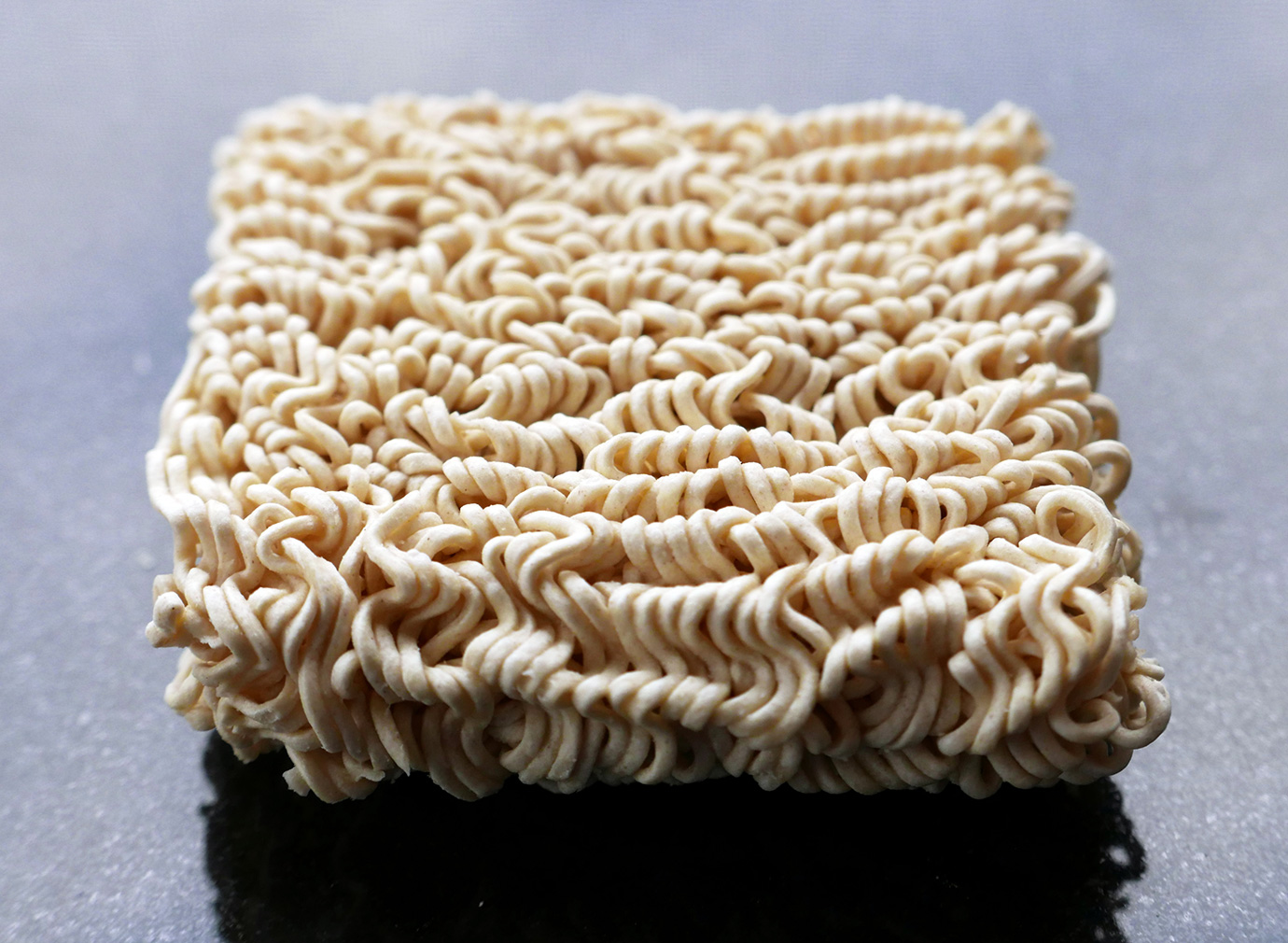I grew up in the mountains of rural Northeast Georgia in the 80’s, where we had a few local restaurants and diners, and a ton of churches. Despite the options, I never found a love of either. The high-end restaurants in the area, Red Lobster and Olive Garden, were some seventy miles away, and the only non-American cuisine was a Chinese restaurant in a K-Mart parking lot. At home, my family ate a lot of food that came in packages: cans, pouches, boxes, cold boxes, and wrappers. Eating was something we did to live, and saying grace was just delaying the business of getting on with it.
Ramen happened to me somewhere between a bowl of SpaghettiOs and a Lipton Cup-a-Soup. As one of the first meals I could make on my own, there was a certain sense of freedom that ramen brought me. Those chewy noodles and relentlessly salty favor became my go-to after school snack, and the foreign sounding brands Sapporo Ichiban and Maruchan made me feel worldly beyond my small town upbringing. If I didn’t have the three minutes required to cook the noodles, I would eat the noodle brick raw, sprinkling the flavor pack directly onto the noodles.

Realizing I would never fit in the South, I packed my bags and headed west, ending up in Seattle. There, I met a girl. We bonded over scrumptious meals in restaurants from places I had only read about: Ethiopia, Afghanistan, Greece, India, Vietnam, Japan, Mongolia, the Philippines, Korea, and on and on. She and her family embraced cooking and eating food the way I had learned to enjoy sports and concerts, as an event to be experienced, shared, and loved. She taught me about living to eat.
Here is where I should say I found religion, too, or possibly a spiritual awakening. While visiting friends in Portland years ago, we visited a food truck park where one of the trucks was serving ramen. Remembering the noodles of my youth, I scoffed at the thirteen dollar price tag for such a lowly meal, fumed at the long wait, but bought a bowl nonetheless. From the moment the broth touched my lips, I was enraptured. Here was this soup, dressed up with egg and a slice of pork but still familiar, echoing all the past bowls, but completely obliterating my idea of what ramen should be. This was a thick, rich, salty broth, layered with hints of onion and blasted with umami, jellied egg marinated to perfection with soy, and an unctuous, melt-in-the mouth pork. I could never have a plastic pack of dried noodles again. My eyes were open.
It’s been years now, and I’ve been chasing that high, trying restaurant after restaurant to discover the perfect bowl. Finding none to match that first experience of real ramen, I began the process of making my own, starting at Christmas several years back. Knowing absolutely nothing about real ramen, my first homemade soup was basically chicken stock, soy sauce, and soba noodles, plus some accoutrements like scallions and chili oil. It was a fair chicken soup, but not ramen. The next year, I would try again, making a broth that took a few hours, but still lacking the basic flavors I had grown to love in ramen, especially a tonkotsu (pork) ramen.
I was then led to Mike Satinover, or the Ramen_Lord after my wife (that girl) had read an article about him. This is a guy who obsesses over every little detail of ramen, including the science behind collagen emulsification and the pH of noodles. This is where I learned the ins and outs of a great bowl of ramen, but would still have hiccups in the final batch. After simmering the broth for 18 hours and driving an hour to get just the right noodles, I learned never to cook the noodles in the broth. The soup turns to gravy at best and gelatin at worst. You need to pre-cook the noodles, add the boiling hot broth, and garnish just before you serve. I’ve gleaned that ramen is salty, and extremely so, or else fails as a ramen. Through the years, I’ve learned to preheat the bowls, or else the large surface area and the prep work involved in plating will make for a tepid dish.
Through repetition and practice, I’ve made some pretty incredible bowls that have had my family happily slurping away and exalting this most underrated soup. Both ramen and I have come a long way.

Justin Gershenson-Gates
A Mechanical Mind


Justin, I can relate completely with learning the art of food and eating. I still am more of the food to live, unfortunately. Thankfully my husband loves the art of cooking. This was an amazing read. I am so yearning for ramen now. – Thank you.